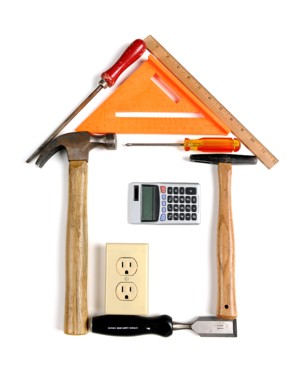Submitting a development application can be tough to do correctly, but at Complete Home we’re providing some expert advice and tips…

WHEN IS A DEVELOPMENT APPLICATION REQUIRED?
You need to make a development application if you propose to do any of the following:
* Erect a new building or structure.
* Erect outbuildings, swimming pools, retaining walls, etc (if they do not comply with the standards in Council’s Local Approvals Policy).
* Add to or alter an existing building.
* Demolish a building.
* Demolish, damage or alter a building or place that is a heritage item.
* In some instances, change the use of a building or premises to another use.
* Subdivide land or strata subdivide a building.
* In some instances, display an advertising sign.
* Carry out earthworks, excavation or filling.
WHEN IS A DEVELOPMENT APPLICATION NOT REQUIRED?
There are very few types of development that do not require a development application. To find out which developments in your area do not require a DA, contact your local council.
HOW DO I PREPARE A DEVELOPMENT APPLICATION?
A development application generally consists of:
* Four (4) copies of an application form*.
* Four (4) copies of plans and drawings of the proposed development*.
* Four (4) copies of a BASIX Certificate (from July 1 2004)*.
* Four (4) copies of a Statement of Environmental Effects*.
* An assessment fee.
*Note: Only two (2) copies are required for single dwellings/additions.
Most local councils produce a DA Guide, which explains how to prepare each of the above components of a development application.
DEVELOPMENT CATEGORIES
The procedures that your local council follows when it considers a development application vary according to the type of proposal and the differing regulations in each area. There are various development categories and these include:
Exempt and complying development
These are minor developments with minimal environmental impact. Exempt development does not require a development application. Complying development also does not require a development application. Instead, approval is given by a “complying development certificate”. This can be issued by your local council or an “accredited certifier”.
Local development
Local development refers to development that requires a development application, but which is not a “state significant development” (see below). Development applications for local development are determined by your local council. Most types of development are “local development” (ie single dwellings, townhouses, units, industrial, commercial).
State significant development
This category comprises development that is declared to be “state significant development” by the Minister for Urban Affairs and Planning, by a State Environmental Planning Policy (SEPP) or by a Regional Environmental Plan (REP). Development applications for state significant development are determined by the Minister for Urban Affairs and Planning rather that the Council. This category is intended for major proposals that are of planning significance to the state or the region.
Designated development
Designated development includes types of development that have a very high potential for environmental impact, and which have been specifically “designated” by planning laws.
Special procedures apply to designated development. These include:
* An environmental impact statement must be prepared.
* There is a 30-day public exhibition period.
* Third party objectors have a right of appeal.
Applications for designated development are rare in most urban areas. They are determined by your local council unless they are declared to be state significant development.
Integrated development
Integrated development is development that requires certain approvals from other government agencies in addition to development consent from your local council.
DO I NEED OTHER APPROVALS?
Before you lodge a development application you also need to consider whether your proposal needs other approvals in addition to development consent (eg is it integrated development?)
Approvals from other agencies
Agencies from which you may need to obtain approval include:
* Heritage Council of NSW.
* Department of Infrastructure, Planning and Natural Resources.
* Department of Environment and Conservation.
Most local councils produce a DA Guide, which can help you identify other approvals that may apply to your proposal.
If your proposal does require an approval from another agency, you must state this on the development application form. A fee of $250.00 is required for each referral to a government department.
Your council will refer the application to the relevant agency and incorporate their requirements into the development consent. To avoid unnecessary delays, it is recommended that you consult with any relevant government agencies before you lodge a development application.
It is the responsibility of the applicant to identify which approvals from government agencies are required when the development application is lodged.
Other approvals from Council
There are a number of activities that require your local council’s approval under the Local Government Act in addition to development consent. The following is a short list of examples:
* Stormwater drainage work.
* Placing a building waste container on the footpath.
* Operating a place of public entertainment.
Customer service officers can help you identify which approvals are required for your proposal. You can apply for these approvals as part of your development application. By indicating on the development application form which approvals you are applying for, you will avoid the need to make a separate application later.
FOR MORE INFORMATION
Your builder or architect should be able to complete and submit your DA for you, or, at the very least assist you with it. For more information contact your local council or contact Archicentre at www.archicentre.com.au and go to the “Ask an Architect” section.





